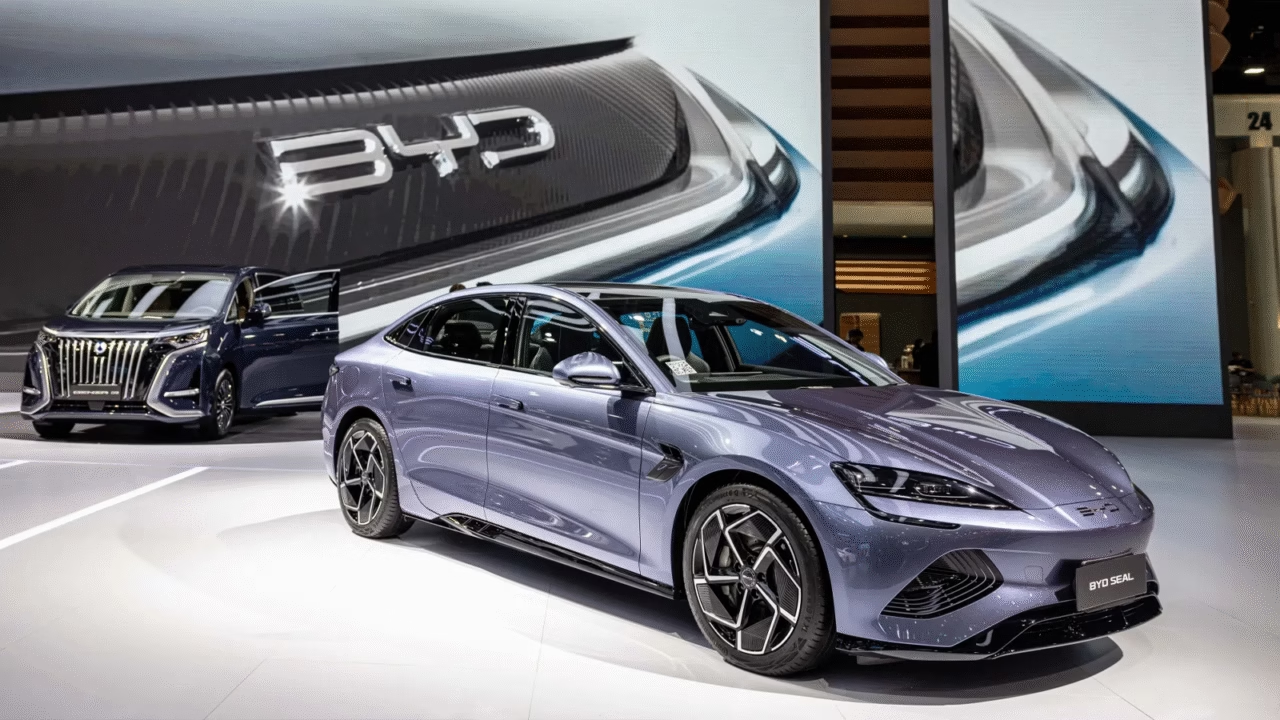For many years, BYD has been recognized as the pinnacle of China’s electric vehicle (EV) revolution. From leading global EV sales to competing with Tesla on various fronts, the Shenzhen-based manufacturer has established a reputation for unwavering growth. However, the most recent figures indicate that even industry giants can falter—BYD has announced a 30% decline in quarterly profits, marking its first such decrease in over three years. This significant downturn signifies a pivotal moment not only for BYD but also for the entire Chinese EV market.
The Growth Engine Slows Down
Until recently, BYD was experiencing a surge of success, fueled by strong domestic demand, government incentives, and a diverse product lineup that includes everything from affordable EVs to premium luxury models under its Yangwang brand. Nevertheless, reports suggest that the company has revised its 2025 sales forecast downward by 16%, decreasing it from 5.5 million to approximately 4.6 million vehicles. This adjustment would result in an annual growth rate of merely 7%—the slowest since 2020.
This deceleration indicates that the previously “white-hot” rate of EV adoption in China is beginning to cool. While demand remains robust compared to conventional markets, the rapid double-digit growth that investors and analysts had anticipated is evidently under pressure.
Why Profits Are Taking a Hit
The decline in profits can be attributed to several key factors:
Price Wars in China’s EV Market:
With more than 100 EV manufacturers saturating the Chinese market, aggressive price reductions have become commonplace. Vehicle prices have decreased by nearly 21% since 2021, putting pressure on profit margins even for established leaders like BYD.
Overcapacity Concerns:
Automakers hastily expanded production in recent years, but supply is now exceeding demand. This has resulted in consecutive production declines for BYD—an occurrence the company has not experienced since 2020.
Global Expansion Challenges:
While BYD has been making progress in Europe, Southeast Asia, and Latin America, the company encounters regulatory obstacles and protectionist policies, especially within the EU, where investigations into Chinese electric vehicle subsidies are currently taking place.
A Market Maturing Faster Than Expected:
The slowdown experienced by BYD reflects a wider trend within the industry. China’s electric vehicle market, which was previously driven by substantial subsidies, urban incentives, and the allure of novelty, is now transitioning into a more mature phase. Consumers have an abundance of options, competition is fierce, and the government is redirecting its focus towards sustainable growth instead of expansion driven by volume.
What’s Next for BYD?
In spite of the challenges, BYD continues to be a significant player in the market. It retains a considerable share in China and often leads global electric vehicle sales. The company’s strategy of vertical integration, which encompasses in-house battery manufacturing through its subsidiary FinDreams, provides it with a cost advantage over competitors. Furthermore, BYD’s strategy for global expansion could mitigate domestic slowdowns if implemented effectively.
However, the true challenge will be whether BYD can evolve from being a volume-centric automaker to a profit-oriented global brand. This entails striking a balance between affordable electric vehicles and premium products, sustaining innovation in battery technology, and maneuvering through increasingly intricate international markets.
BYD’s profit decline serves as a wake-up call for China’s electric vehicle sector. The era of unrestrained growth may have come to an end, but this period could encourage companies to pursue greater efficiency, build stronger brands, and achieve more sustainable growth. For BYD, the future remains bright—but it will necessitate a more refined strategy, disciplined growth, and resilience in the face of escalating global competition.

